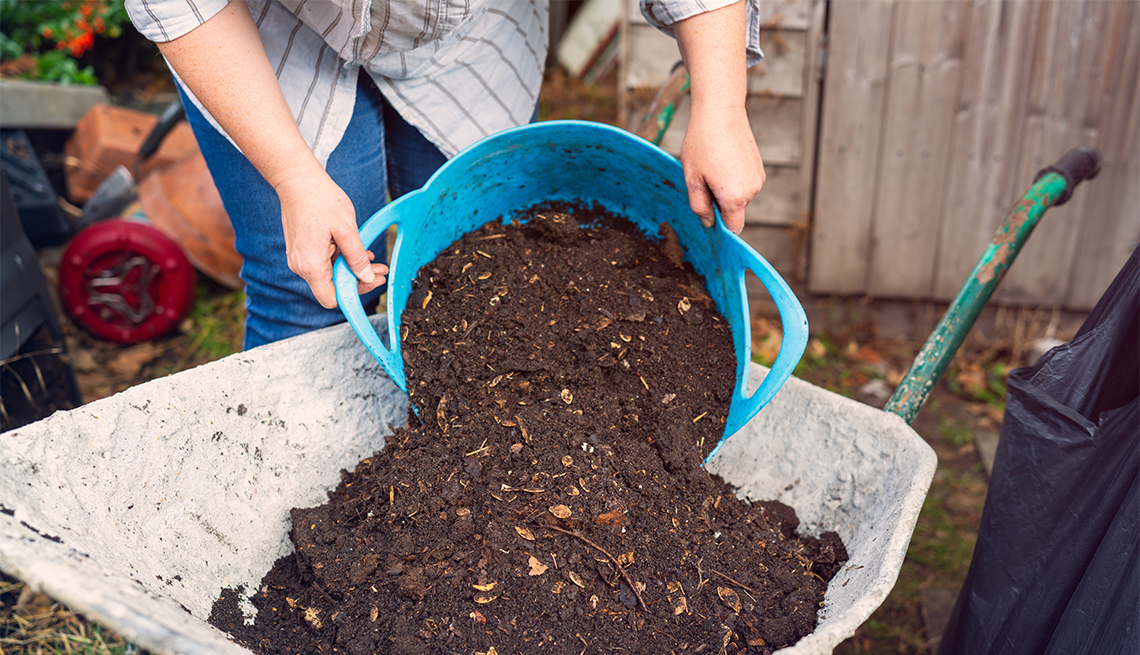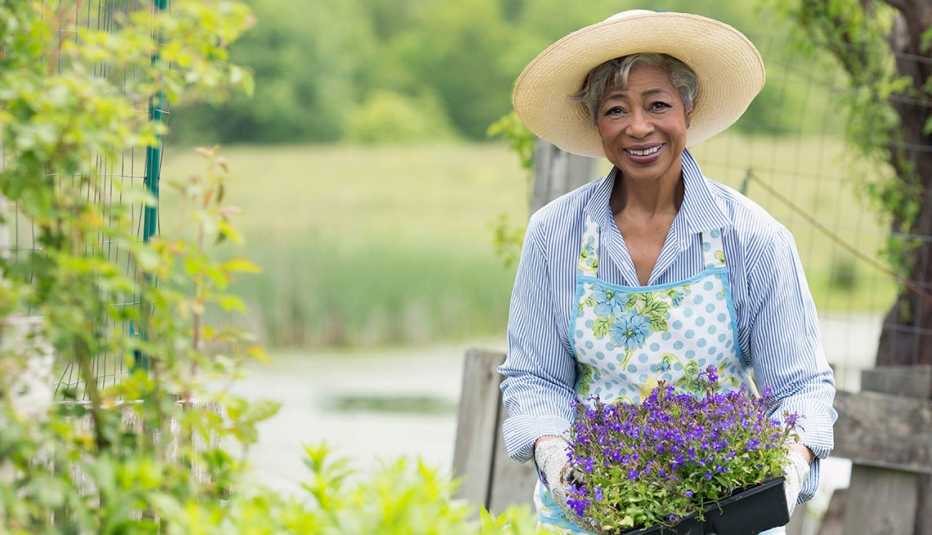Staying Fit
Come spring, gardeners are like horses at the gate, barely able to contain themselves at the thought of getting a jump on the season.
Not to overstate a simile, but hold your horses. Though you might have a long list of spring garden tasks, make sure you’re not too eager, especially for planting, warns Susan Mulvihill, a garden author, blogger and YouTuber based in Spokane, Washington.
“It’s important not to jump the gun and plant too early,” says Mulvihill, author of The Vegetable Garden Pest Handbook. “There are certain microorganisms in the soil that don’t become active until a certain temperature is reached in the soil. Years ago, I would plant my corn too early, and I’d say, ‘Why is it so yellow?’ And it was because microorganisms that make nitrogen available to the plant roots weren’t active yet.”


AARP Membership— $12 for your first year when you sign up for Automatic Renewal
Get instant access to members-only products and hundreds of discounts, a free second membership, and a subscription to AARP the Magazine.
Don’t waste your money irrigating, fertilizing or putting out weed control before plants are growing and ready to take it in, says Katy Shook, an area horticultural agent for North Carolina State Extension in Chowan County. “We don’t want to put it out until plants can actively use it,” she says. “So no input unless it’s the right time and the plant’s going to be affected by it.”
So what should be on your spring to-do list? If you’re aching to get started, here’s a list of starter tasks from the experts:
1. Research and make a plan
Get your yard ready
- Curious about robot mowers?
- Members Only: Lawnbot joys
- Members Only: Guide to mulch
- 6 ways to prep your garden
- Perfect your patio or deck
Understand the limitations of your planting zone and perhaps invest in a soil thermometer (starting at about $15) so you know when it’s the right temperature to plant, Mulvihill says. Check your garden site for hours of sunlight and a practical water source. Make a plot plan of your vegetable garden so you’ll know where to rotate crops. “If the crops from the same plant family are in the same bed year after year after year, those plants are at higher risk of having repeat insect problems and disease problems,” she says. Start a garden journal to record what works. Search for the best plants for your zone and area. Kevin Philip Williams, assistant curator of the Denver Botanic Gardens, recommends groups such as Plant Select, a nonprofit partly supported by the Denver garden that researches plants best suited for the West. Another organization, Chicagoland Grows, concentrates on plants for the Upper Midwest.
2. Spring-clean your tools
No doubt you meant to do this last fall before you put your garden tools away, but it’s not too late. Wash shovels, hoes and other tools with a strong stream of water to remove caked-on dirt, then dry, advises the Iowa State University Extension and Outreach service. Wipe the metal surfaces with an oily rag or spray with a rust preventative such as WD-40. Next, sand the wooden handles and wipe them with linseed oil to prevent drying and cracking. That will also make them more comfortable to use. Take hoes, spades, shovels and pruners to be sharpened — it will make a difference in the amount of effort required to use them. Many hardware stores or tool shops will sharpen tools, and you can treat yourself to a fresh pair of gardening gloves. Don’t forget to sanitize your pruners in between plants to prevent the spread of disease. The easiest way is to dip them in ethanol or isopropyl alcohol, available at most drugstores. No prolonged soaking is needed, the extension service notes.







































































